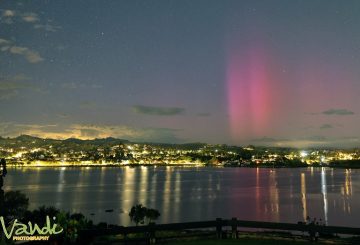Các dịch vụ khẩn cấp đã được gọi đến Pringle House ở Wellington vào sáng thứ Ba sau khi một người ngồi xô xô bị thương khi rơi ba tầng qua một cầu thang bị sập. Người đàn ông hiện đang trong tình trạng nguy kịch tại bệnh viện Wellington. Vụ việc đã làm nổi bật vấn đề vô gia cư trong thành phố, với Người truyền giáo thành phố, Murray Edridge, nói rằng đây có lẽ không phải là một tình huống duy nhất.
Edridge nói rằng mặc dù hầu hết mọi người sẽ không xem xét việc sống trong một tòa nhà nguy hiểm, bỏ hoang, nhưng đối với những người vô gia cư, đó có thể là lựa chọn tốt nhất hiện có. Ông nói thêm rằng với thời tiết lạnh hơn, ẩm ướt hơn, ngày càng có nhiều người tìm nơi trú ẩn trong các tòa nhà không an toàn. Ông thừa nhận áp lực mà điều này gây ra cho các chủ sở hữu tòa nhà và hội đồng để ngăn chặn việc tiếp cận các không gian nguy hiểm, nhưng nhấn mạnh rằng điều này không giải quyết được vấn đề cơ bản của tình trạng vô gia cư.
Edridge ước tính rằng có từ 150 đến 200 người sống trên đường phố ở Wellington, với nhiều người khác “vô hình trong hệ thống”, sống trong các đoàn lữ hành, nhà kho, ô tô hoặc những ngôi nhà đông đúc. Ông kêu gọi cộng đồng chịu trách nhiệm về vấn đề này, lưu ý đến việc thiếu những ngôi nhà chất lượng, giá cả phải chăng trong thành phố.
Thị trưởng Wellington Tory Whanau đang làm việc với Bộ trưởng Xây dựng và Xây dựng Chris Penk để tìm hiểu xem các hội đồng có nên có nhiều quyền lực hơn để đối phó với các tòa nhà nguy hiểm hay không. Các kế hoạch đã được đưa ra để khuyến khích phát triển các tòa nhà trống, bao gồm đề xuất tính thuế cao hơn cho chủ sở hữu đất trống và các tòa nhà bỏ hoang. Đề xuất có thể ảnh hưởng đến khoảng 60 tài sản. Whanau cũng đề cập đến sự cần thiết phải xem xét các quy định xây dựng dễ bị động đất, vì nhiều tòa nhà trống của thành phố bị ảnh hưởng bởi các quy tắc này.





























































